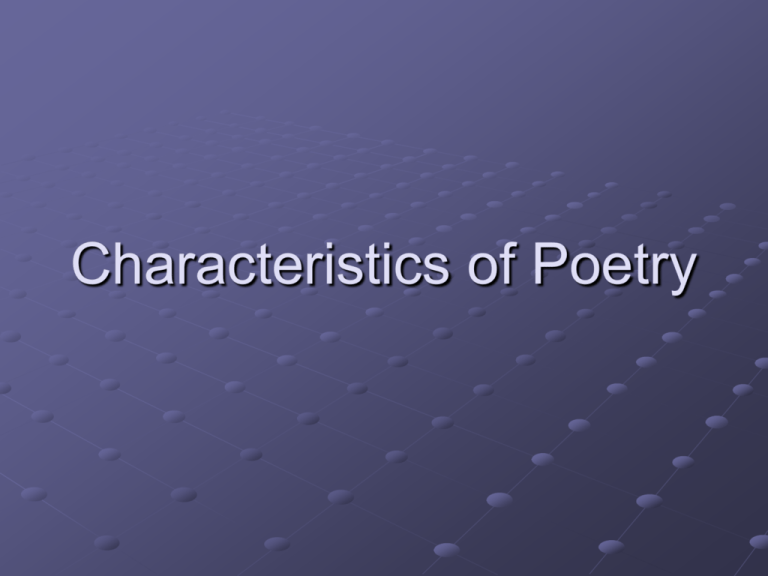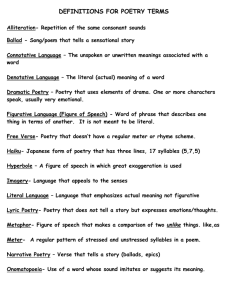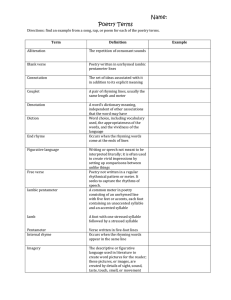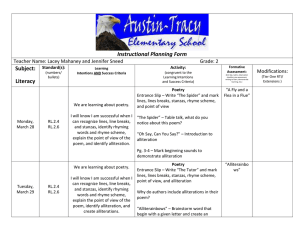Poetry!!! - Effingham County Schools
advertisement

Characteristics of Poetry Sensory appeal is words, phrases, or images that appeal to your senses. Interpretation of poetry is to make sense, or assign a meaning to the poem. Interpreting a poem requires asking questions like “What does this mean?”, “What message do you see?”, “What is the author trying to convey?” End stopped is when punctuation occurs at the end of a line to stop a line of poetry; place for a pause. Figurative vs. literal meaningLiteral language refers to facts without any exaggerations or alterations of the subject at hand. Figurative language states the facts with comparisons to similar events and some possible exaggerations; these comparisons and exaggerations are known as figures of speech. Example: Literal language is “The ground is dry.” Figurative language is “The ground is thirsty and hungry.” Inference is the act or process of developing a conclusion based solely on what one already knows. Poetic form consists of the lines and stanzas that make up a poem. It is the form of a poem that makes it different than prose (ordinary writing). Stanzas are units of a poem that are written or printed as a paragraph; equivalent to a verse. Lines make up the stanzas that make up a poem. Imagery is descriptive language that evokes sensory experience. Imagery creates word pictures for the reader. These images are created by details of sight, sound, taste, touch, smell or movement. How does the poet use language and form to create and emotional response from the reader? Literary Elements: Rhyme scheme is the pattern of rhyming lines in a poem or song. It is usually referred to by using letters to indicate which lines rhyme. In other words, it is the pattern of end rhymes or lines. Scansion is a system to mark the metrical patterns of a line of poetry. A foot is the smallest unit of rhythm in a line of poetry. In English-language poetry, a foot is typically one accented syllable combined with one or two unaccented syllables. There are many different types of feet. Symbol is something such as an object, picture, written word, sound, or particular mark that represents something else by association, resemblance, or convention. Tone is the writer’s attitude towards his audience or subject. Repetition is the repeated use of the same word or word pattern; used as a rhetorical device. Meter is the rhythmical pattern of a poem. It is determined by the number and types of stresses, or beats, in each line. A speaker is someone who expresses in language. Couplet is a pair of rhyming lines, usually of the same length or meter. Mood is the feeling or atmosphere that a writer creates for the reader Rhyme is the repetition of sounds at the ends of words. End rhyme the rhyming of words at the ends of lines of poetry- could/would; boot/loot. Approximate rhyme is words that come close to rhyming without copying the exact sound patternsteer/stare, mud/could, and late/light Internal rhyme is the rhyming of two or more words in the same line, most often in the middle and at the end of the line; "I am the daughter of Earth and Water Rhythm is a pattern or beat of stressed and unstressed syllables in a line of poetry






